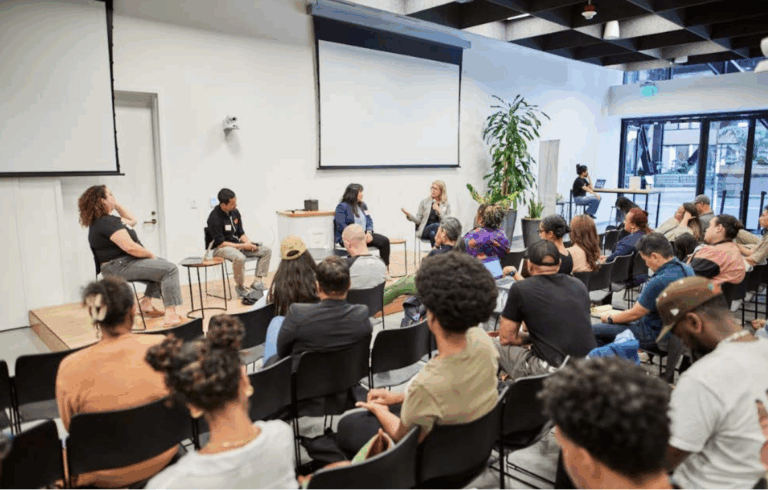
After 18 months of active engagement, and many more months of preparation, the Learning Landscapes Challenge–a $2.2M prize competition co-sponsored by Siegel Family Endowment and Walton Family Foundation–has come to an exciting conclusion, with winners New Visions for Public Schools and Xchange Chicago each awarded $500,000 in prize money. We sat down with Joshua Elder, Vice President and Head of Grantmaking at Siegel Family Endowment, to reflect on the challenge’s journey and what he and his team have learned along the way, exploring the gaps in the education investment landscape, the evolving concept of multidimensional infrastructure, and how the challenge model unlocked new avenues for invention and collaboration.
What inspired Siegel to collaborate with Walton to launch the Learning Landscapes Challenge? What gap were you seeing in the education ecosystem?
We spent a lot of time upfront thinking about the difference between running this as a traditional grantmaking initiative versus a challenge. What would we miss if we followed the typical path? That’s where the idea of unlocking innovation really came in.
Traditional grantmaking, even when it’s framed as risk capital, often ends up supporting ideas that are already proven, safe bets. They’re usually well-established interventions, even if they’re effective. With the Learning Landscapes Challenge, we wanted to create a mechanism that encouraged something bolder. A challenge can prompt people to come together in new ways and build partnerships that might not naturally exist.
The goal was to create a future-ready vision of learning environments rooted in what communities actually need. That means inviting ideas that consider how physical spaces, digital tools, and social supports work together. We hope that the structure of this challenge, with multiple levels of support and the right scaffolding, has encouraged that kind of integrated, systems-level thinking.
Was there a particular moment or trend that made this the right time to launch?
It wasn’t a single moment as much as an accumulation of momentum. About 18 months before launch, we were gaining traction in our internal framing of schools as multidimensional infrastructure—the idea that learning doesn’t happen only in schools and that there’s a broader ecosystem at play: communities, digital infrastructure, and the built environment.
We were also seeing a shift among other funders. There was a growing recognition that while we still need to address the current state of education, we also have to begin investing in what the future should look like. That kind of future-focused investment requires collaboration, not just among nonprofits in the education space, but across sectors. It also requires rethinking how we allocate capital and what kinds of solutions we’re willing to back.
How did the three dimensions of infrastructure—physical, digital, and social—show up in community contexts? What did the strongest ideas do to localize those ideas?
At the outset, we defined multidimensional infrastructure across three domains: physical, digital, and social. But early on in the challenge, those definitions felt narrow. “Physical” was often interpreted simply as school buildings. “Digital” was seen mostly as connectivity. And “social,” which was always a bit nebulous, tended to get flattened into just “community.” Many proposals were very strong in one or two dimensions, but struggled to meaningfully integrate all three.
You can’t apply a cookie-cutter model to something like multidimensional infrastructure. It has to be contextual. You have to look closely at the community you’re working in: what strengths already exist, where the gaps are, and what the opportunities could be. That’s what made the finalists stand out. They didn’t treat the three dimensions like a checklist. They asked: What does a future-ready learning environment look like here, for our students, our families, our ecosystem?
Each finalist took a tailored approach. They contextualized physical, digital, and social infrastructure in ways that made sense for the challenges and assets in their specific communities. That was the kind of thinking we were trying to unlock: solutions that don’t just work in theory but are grounded in place and people.
How did capacity-building support play a role in helping finalists refine their ideas throughout the challenge?
One key principle for us was that we didn’t expect polished solutions from the start. Instead, we sought promising, ambitious ideas. Big visions that could be shaped, prototyped, and iterated into real, implementable solutions.
What made the process effective was pairing these early-stage ideas with technical support at every step. We brought in experts to offer honest, practical guidance, not to change the core ideas, but to help teams identify potential pitfalls, learn from what’s been tried before, and find opportunities to improve.
Asking for innovation is one thing; providing the scaffolding to get there is another. The critical piece was embedding support mechanisms throughout the process so solvers didn’t need to arrive with fully baked models. They had room to experiment and refine, and we supplied the tools and expertise to help them succeed.
Looking back at the challenge design, what are you most proud of and what would you advise others to do differently when creating education-focused challenges?
Designing a challenge around something as broad as “future-ready learning environments” was a double-edged sword. On one hand, it opened the door to a wide range of ideas and gave applicants the flexibility to think expansively. On the other hand, that breadth created some real challenges. Without a tight focus, there’s more upfront work required to make sure everyone is aligned. Not just applicants, but also judges, reviewers, and partners.
The concept of multidimensional infrastructure was both a strength and a complexity. It’s a powerful framing, but we had to do a lot of education and calibration across the board. Judges, in particular, came with different expertise, so we had to dedicate significant time to ensure that everyone knew what we meant and how to evaluate proposals consistently.
One design decision I’m glad we made is that we didn’t tie the challenge to narrow, prescriptive outcomes—like boosting math achievement for a specific grade band. Those kinds of challenges have their place, but we wanted something different. We believed that if you create a truly future-ready learning environment, improvements in student outcomes would follow. By focusing on ecosystem-level solutions, we created space for bolder, more holistic innovation.
But that kind of early-stage support requires capacity building, right? How do you balance the desire to fund innovation with the reality of what it takes to support it well?
That’s the tension. Capacity building takes real work–and real money, and we’ve gone back and forth about how deeply we, as a funder, can or should lean into that role.
What we’re trying to figure out is: can we play a more focused role in the earliest phases, while also working with others who are better positioned to provide the technical assistance, coaching, and infrastructure support grantees might need?
What’s clear is that we can’t do everything ourselves. But we can be intentional about where we step in, and how we partner with others to build a healthy pipeline from ideas to implementation.
Let’s talk about that pipeline. A lot of funders talk about ecosystem-level collaboration, but there’s still a tendency to chase what’s new. What’s your take on that?
It’s a real dynamic. But for us, it comes down to humility. We know we’re a small or maybe mid-sized funder and that our philanthropic capital only goes so far. And philanthropy is just one piece of the equation. So we’ve been intentional about saying: we need partnerships. This work is too big and too complex for any one funder to solve alone.
That’s why our collaboration with a well-established funder like Walton Family Foundation was so rewarding. We each brought different lenses, ours more tech-forward and systems-oriented, theirs with deeper experience in place-based education and scale. Together, we were able to offer something more complete than either of us could alone.
So yes, funders do have strategic priorities and limitations to what they can and can’t fund. But if we’re serious about systems change, we have to align our efforts and invest in the full pipeline—from early-stage experimentation to later-stage scale. That only happens in partnership.
Zooming out a bit, how do you see Siegel’s role in the education innovation space evolving after this challenge?
We’ve always believed in the multidimensional infrastructure lens, but I think what’s emerging more clearly now is our role at the intersection of education and technology. You can’t talk about the future of learning without thinking about AI, computer science, edtech, and how those tools are reshaping what’s possible in a learner-centered system.
So our niche is really at that convergence point. We’re focused on building learning environments that are future-ready, equitable, grounded in infrastructure, shaped by technology, and centered around the learner. That’s where we think we can bring something distinct.
It’s not that other things—like literacy or numeracy—aren’t important. They absolutely are. But we’re prioritizing the conditions and capabilities that every student will need, no matter what future they pursue.
If someone was observing this challenge from the outside, what are the top takeaways you’d hope they walk away with?
First, that ecosystem partnerships matter a lot. Tackling something as complex as the future of learning can’t be done in silos. Isolated efforts fizzle. They burn out. So if we care about long-term sustainability and scale, we have to operate at an ecosystem level. That means real, deep collaboration—not just coordination—across sectors and stakeholders.
Second, we need to confront the reality that we’re still designing educational futures for young people, not with them. That’s something I’m pushing on in other areas of our work too. Even with our best intentions, we often leave students out of the room when decisions are being made. And that’s a huge missed opportunity. Designing with and not for—that’s a shift the field still needs to make.





